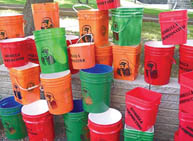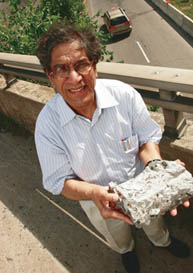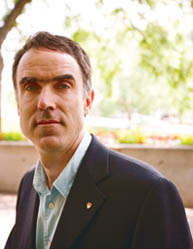Headliners: From collapsing downtown to Arctic meltdown
Headliners: From collapsing downtown to Arctic meltdown McGill University
User Tools (skip):
HEADLINERS
From collapsing downtown to Arctic meltdown

Gorilla Composting's bucket brigade
iSTOCK PHOTO
McGill red goes green
McGill earned high praise for its various green initiatives in a recent article in the Montreal Gazette. The school's green building policy and its Energy Week challenge—in which staff at specific buildings try to consume as little energy as possible—were highlighted. As the article pointed out, much of McGill's green hue is the result of student innovation. Greening McGill, the Midnight Kitchen, and the green granddaddy of them all, Gorilla Composting were among some of the important student initiatives mentioned. "Not since the peace movement of the '70s have I seen a movement that has attracted the involvement of students to the degree this does," said Wayne Wood, associate director, Environmental Health and Safety.
Researchers cry "Foul ball!"
First, a National Basketball Association official was charged with two felony gambling charges and now this—racially biased Major League Baseball umps? A study co-authored by McGill's Christopher Parsons, a finance prof at the Desautels Faculty of Management, and colleagues from the University of Texas and Auburn University, has shown that umps are more likely to make calls in favour of a pitcher if they share the same race or ethnic background. Interestingly, when the umpires know they are being graded by a computerized system, they are less likely to show favouritism. As might be expected, the study hit a home run in the media, appearing across North America, including The New York Times, the CBC and the Globe and Mail.
Time crumbles things, film at 11

Mirza: sifting through the rubble for answers.
OWEN EGAN
Already the go-to guy for local media for analysis of the Concorde overpass collapse and all related stories to do with the city's aging infrastructure, structural engineering prof Saeed Mirza was at it again following the recent discovery of a large fissure in a downtown tunnel leading to the McGill Metro station. With city officials scrambling to explain the7-metre-long fissure that shut down much of the downtown core over the weekend, Mirza dismissed speculation that it may have been caused by the vibrations from heavy jackhammers used in nearby construction. Instead, he suggested the crack may have been caused by shifting of the earth between the roadbed and the mall.
Balmy days in the High Arctic

Tremblay: Arctic tan lines?
Claudio Calligaris
With his research junket to the Russian Arctic just days away, Bruno Tremblay may want to consider packing sunscreen and his favourite swim trunks. Following a warm, sunny summer up north, there is less Arctic sea ice than ever recorded. "I never thought it would go that low that fast," said the professor of atmospheric and oceanic sciences to National Geographic News just last week. "There's still a month of melting in front of us, and we've already passed the record of 2005." Tremblay, one of the world's foremost experts on summer ice melt, predicted in a NASA-funded study last December that an ice-free Arctic could come as early as 2040.
Doing the Neutron Dance
Physics professor Robert Rutledge is the newest star in the McGill galaxy following his discovery of Calvera, a neutron star right in Earth's own backyard. Located a mere 250 to 1,000 light years away from our fair planet, Calvera is the closest neutron star ever known. One of only eight known "isolated" neutron stars (or stars that do not have supernova remnants, binary companions or radio pulsations), Calvera's proximity to Earth is somewhat of a mystery. Rutledge believes Calvera may be a remnant of a star hanging out close to the neighbourhood where it was born.

